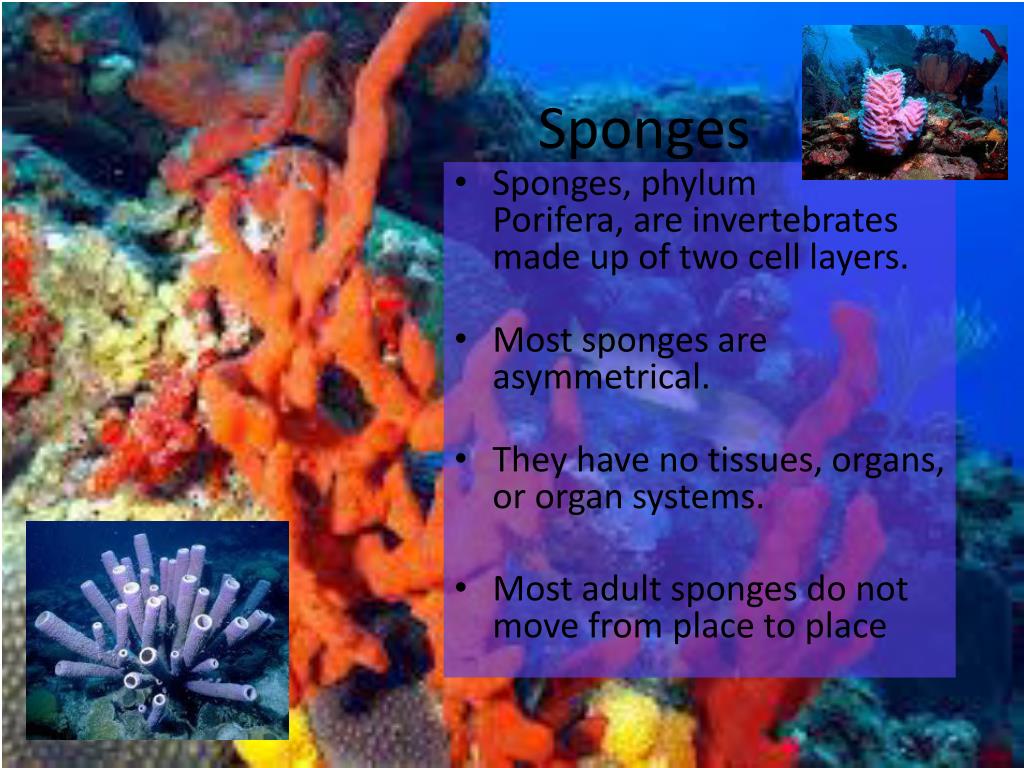

The larvae may settle directly and transform into adult sponges, or they may be planktonic for a time. In most sponges for which developmental patterns are known, the fertilized egg develops into a blastula, which is released into the water (in some species, release takes place right after fertilization in others, it is delayed and some development takes place within the parent). Some sponges are monoecious others are dioecious. Spermatozoa are "captured" by collar cells, which then lose their collars and transform into specialized, amoeba-like cells that carry the spermatozoa to the eggs. Male gametes are released into the water by a sponge and taken into the pore systems of its neighbors in the same way as food items. Sexual reproduction takes place in the mesohyl.

Some species also form internal buds, called gemmules, which can survive extremely unfavorable conditions that cause the rest of the sponge to die. Asexual reproduction is by means of external buds. Reproduction by sponges is by both sexual and asexual means. Food items are taken into individual cells by phagocytosis, and digestion occurs within individual cells. Sponges capture food (detritus particles, plankton, bacteria) that is brought close by water currents created by the choanocytes. Skeletal elements, choanocytes, and other cells are imbedded in a gelatinous matrix called mesohyl or mesoglea. They are supported by a skeleton made up of the protein collagen and spicules, which may be calcareous or siliceous, depending on the group of sponges examined. Sponges are either radially symmetrical or asymmetrical. Water movement is driven by the beating of flagellae, which are located on specialized cells called choanocytes (collar cells). Other characteristics of sponges include a system of pores (also called ostia) and canals, through which water passes. This is the simplest kind of cellular organization found among parazoans. Sponges have cellular-level organization, meaning that that their cells are specialized so that different cells perform different functions, but similar cells are not organized into tissues and bodies are a sort of loose aggregation of different kinds of cells. Sponges are primarily marine, but around 150 species live in fresh water. Sponges are a diverse group of sometimes common types, with about 5000 species known across the world.


 0 kommentar(er)
0 kommentar(er)
